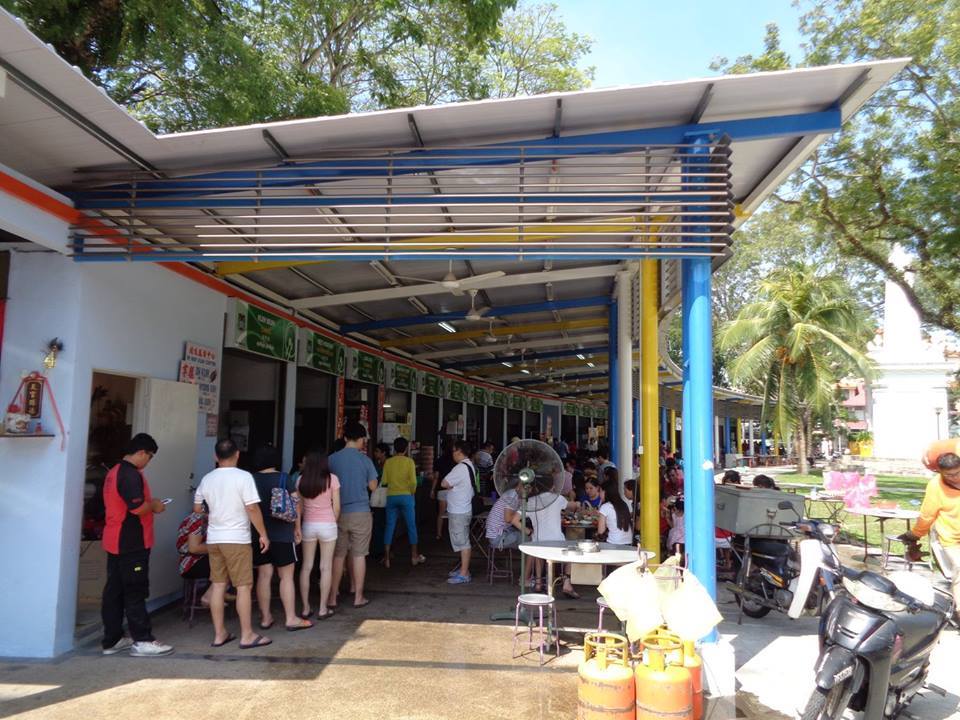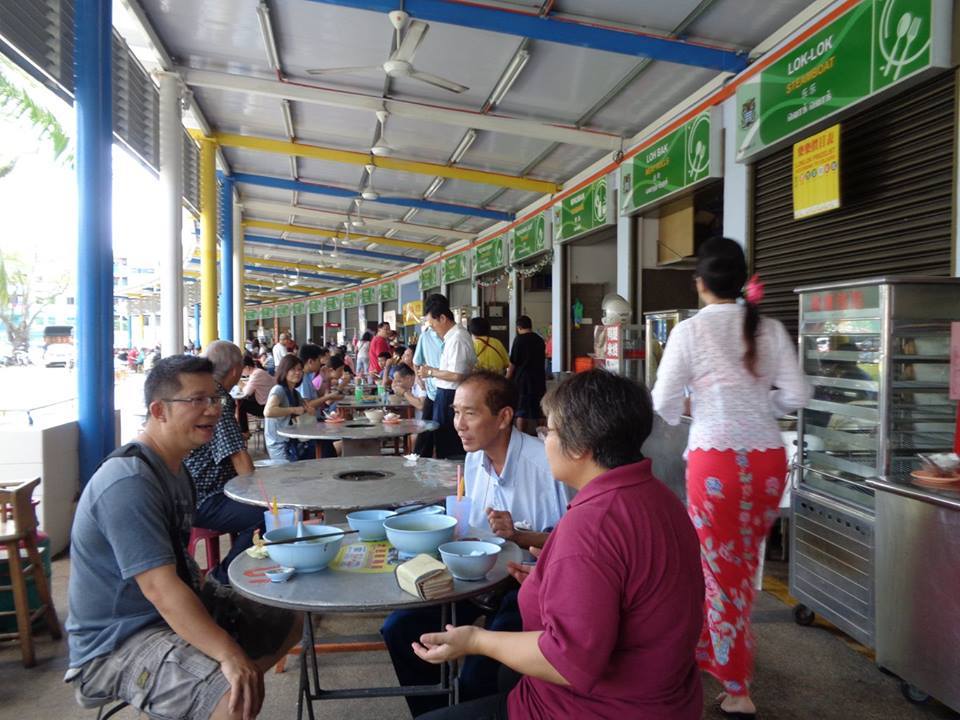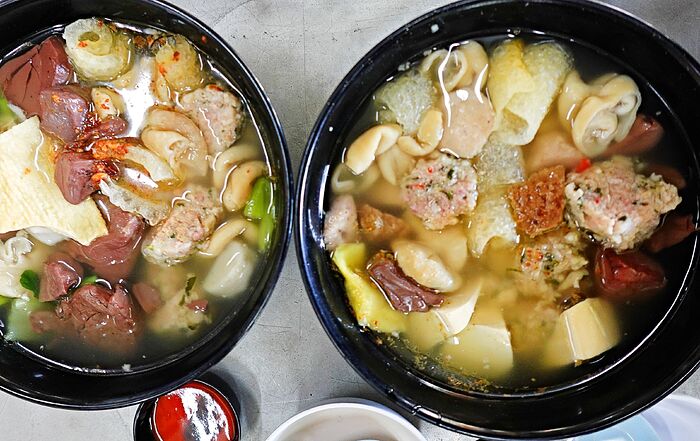Padang Brown Food Centre - it’s named after David Brown (1778- 1825), a colonial-British nutmeg planter in Penang - is one of the best places to find Penang hawker food on the island (it’s opened for lunch/afternoon tea, and winds down by dinner-time). Since the 1950s, Padang Brown (“Padang” in Malay means “field”) has been one of Penang’s foremost hawker centres.
It’s still extremely popular today - and two of the reasons are the crabmeat “popiah” and Penang-style “yong tau foo” stalls, both the best of their kind in George Town, Penang.
- Crabmeat “popiah”
This crabmeat “popiah” place started gaining its stellar reputation in the 1960s when Penangites started noticing the quality of its filling: fresh crabmeat atop the carefully stewed shredded jicama. Owner, Ong Leng Hin carefully cooks his jicama-tofu filling in crab broth for 2 hours to obtain a sweet, shellfish flavour. The filling is then wrapped in thin “popiah” (rice crepe) skin, with Chinese lettuce leaves and thin smears of hoi-sin sauce and chilli paste. Unlike its Singaporean counterpart, there’s no raw garlic in the filling, hence the gentler, subtler flavour of Penang popiah. Also, unlike its Taiwanese counterpart, Penang popiah does not contain crushed peanuts, shrimps or Chinese waxed sausages, hence simpler in texture and flavour.
Penang-style “popiah” is also unique in that it’s usually served drenched in the light broth obtained from the jicama stew - this sets it apart from its cousins in KL, Singapore, Vietnamese “goi cuon” & Indonesian/Filipino “lumpia”, all of Hokkien/Teochew origins.
- Penang-style yong tau foo, unlike the usual Hakka-style “yong tau foo” which one finds everywhere in Malaysia and Singapore, where the filling is fish forcemeat, Penang-style Hokkien-influenced “yong tau foo” is based on pork: minced pork filling, pork balls, pig’s intestines, pig liver, puffed dried pig’s skin, pig’s blood jelly, etc. besides the requisite tofu, fishballs and vegetables stuffed with fish forcemeat.

Penang’s Hokkien-influenced “yong tau foo” is enjoyed by itself - no rice as side-dish as in Kuala Lumpur, and no noodles of any ilk like its Ipoh counterpart. The lady who runs the stall, Mdm Hong Hee Tin, took over the popular 60-year-old stall that was founded by her father, Hong Leong Bak, in 1955. Mdm Hong complained to me about how exasperated she was with customers from KL who asked for steamed rice from her, or Ipoh clientele who requested for noodles. “NO RICE! NO NOODLES! This is Penang!!”, she’d huff ![]()
For a moment, I was tempted to tell her that in Singapore, our “yong tau fu” comes with a bowl of Hakka noodles with minced pork-dark soy-sauce topping, but thought I’d better hold my tongue ![]()

Padang Brown Food Centre, and with the David Brown Memorial’s obelisk in the middle:



























